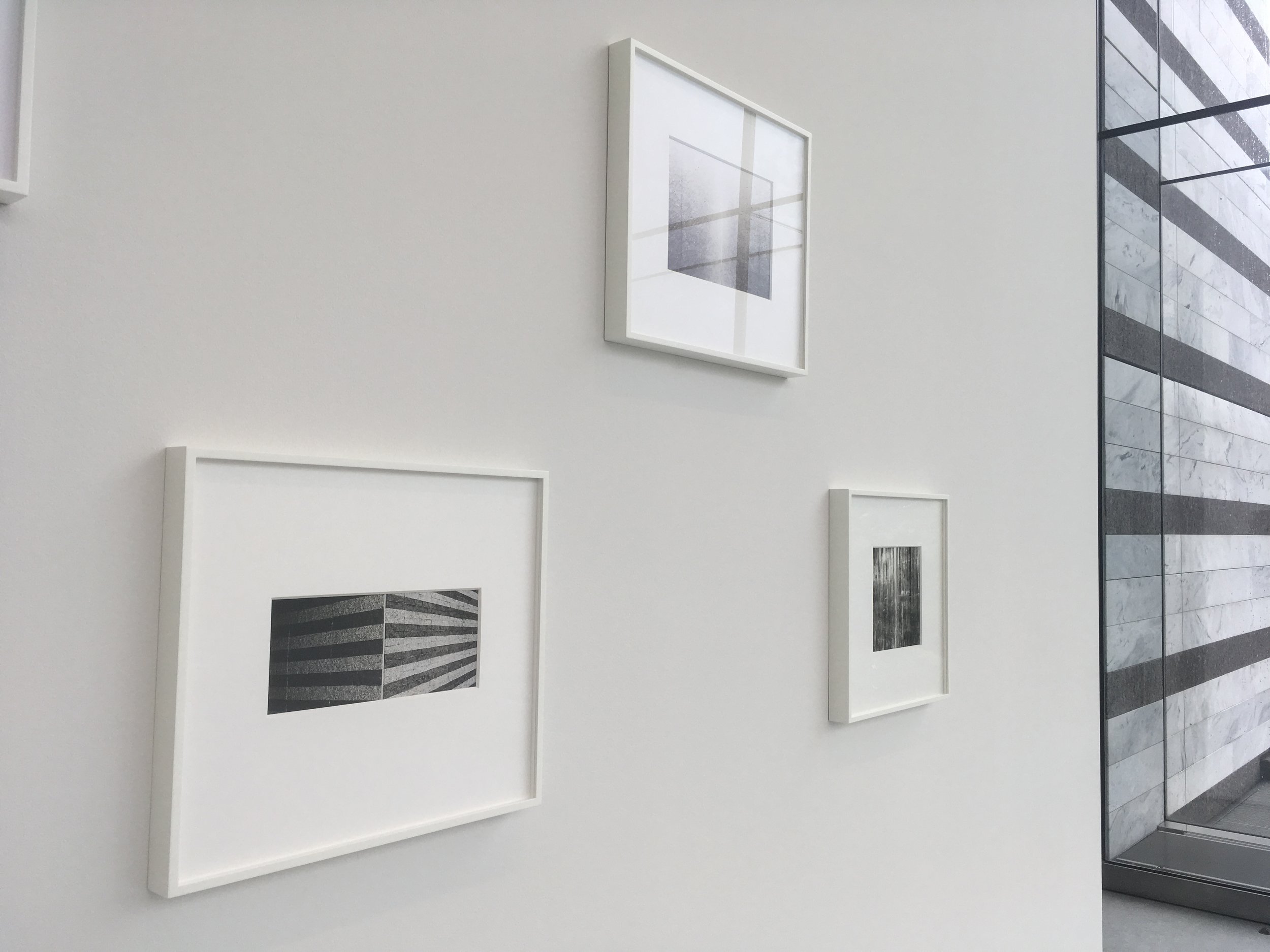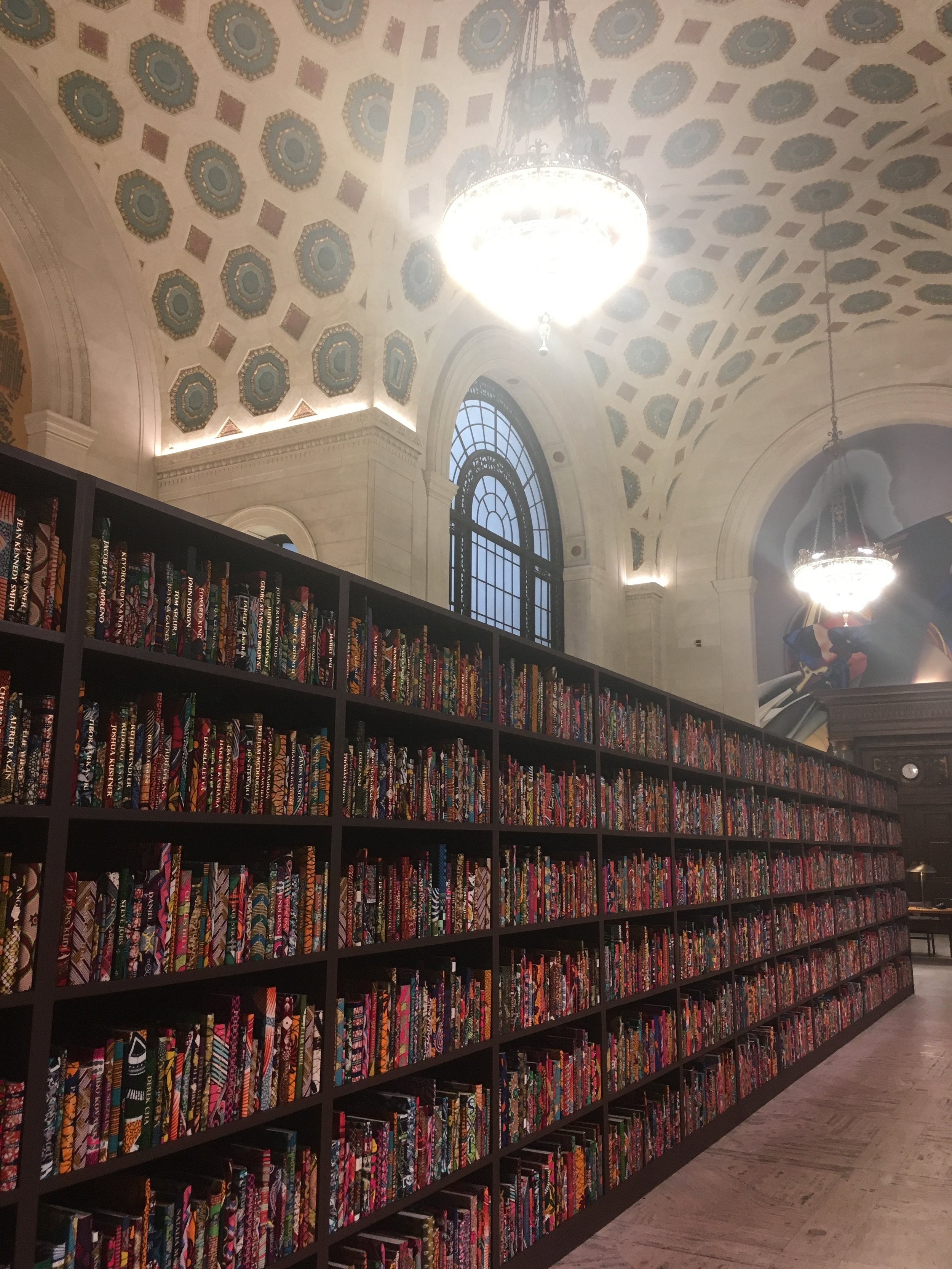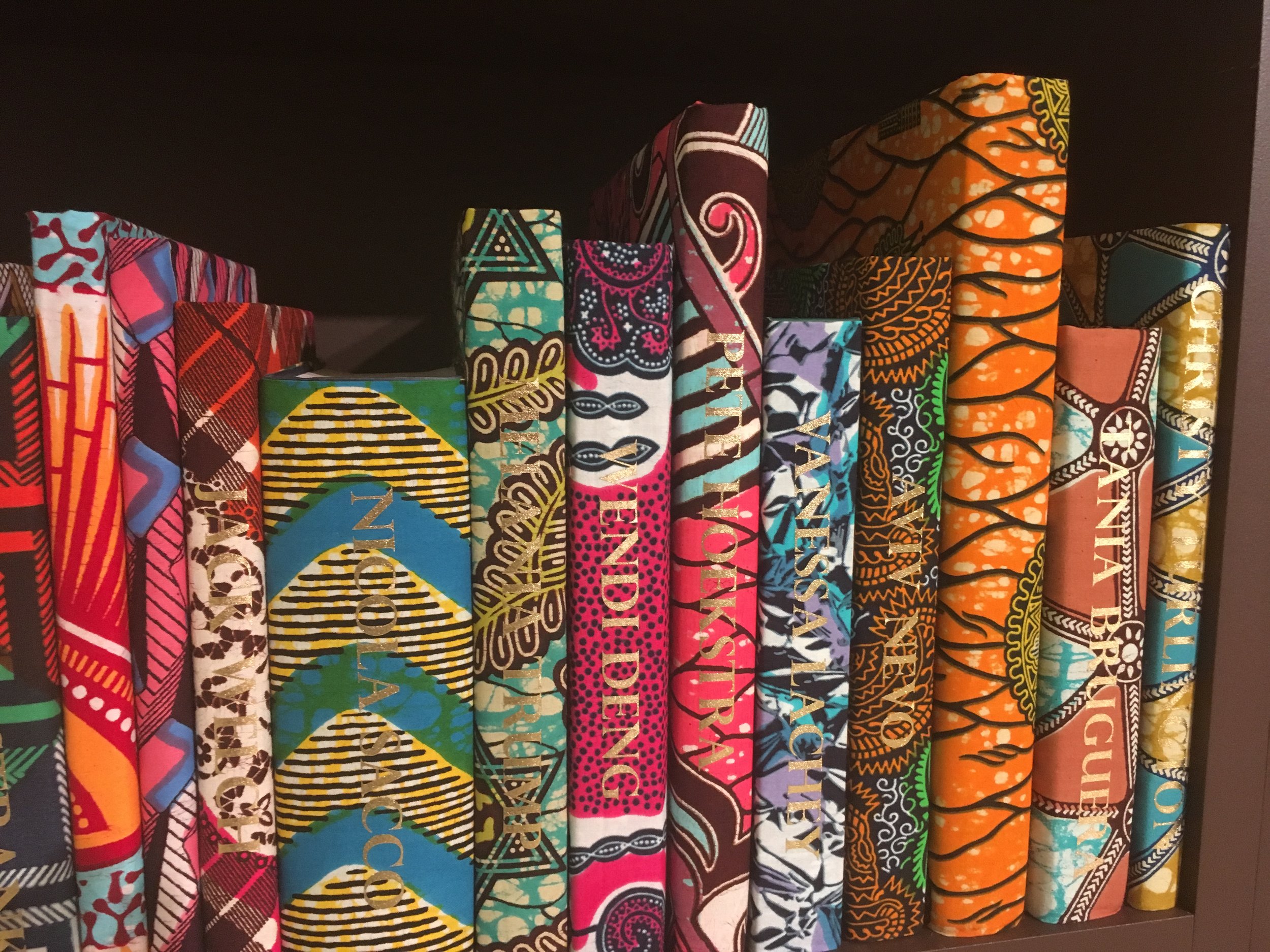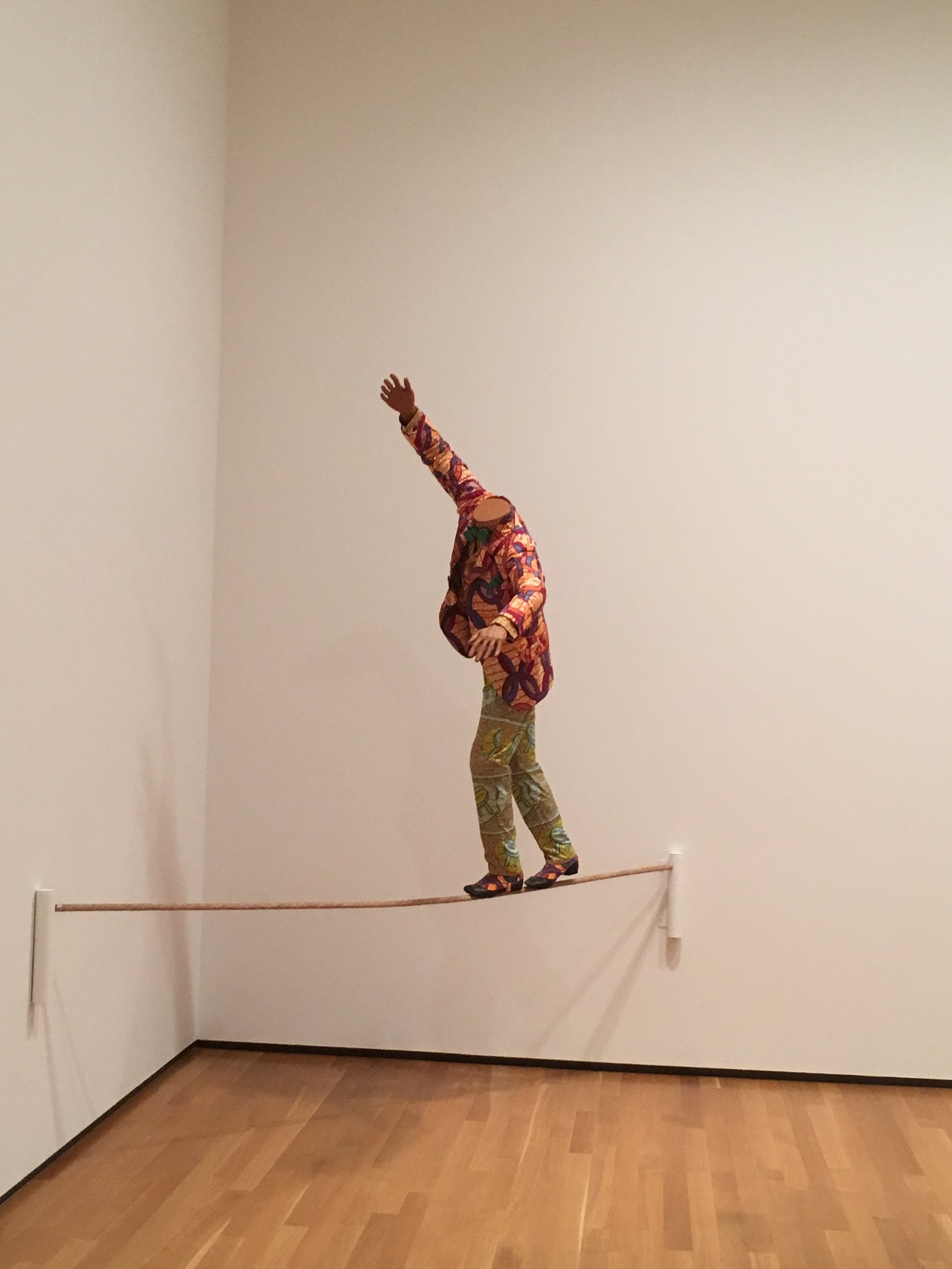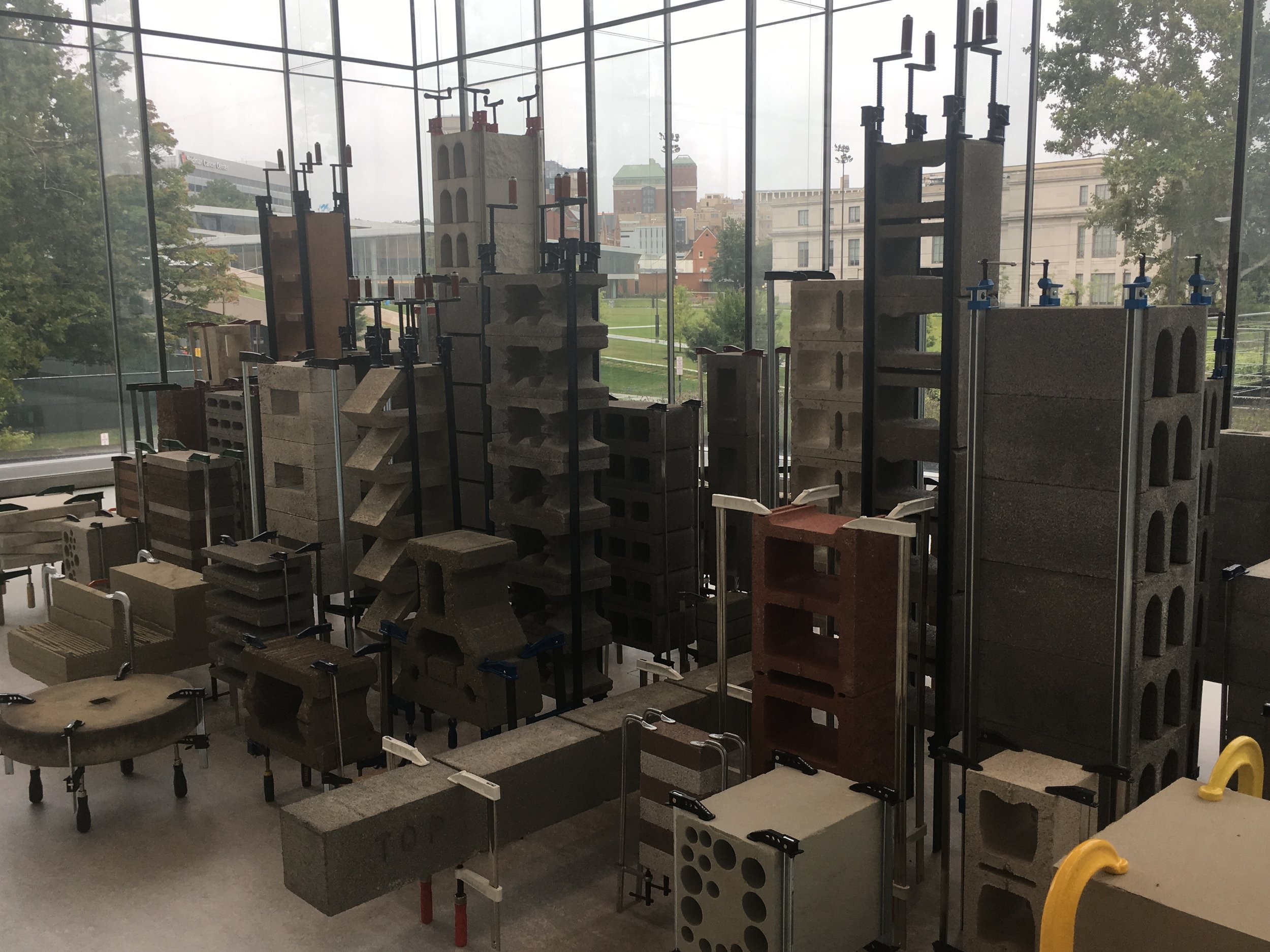Co-director of PGH Photo Fair Evan Mirapaul has been collecting photographs of people with violins for 30 years. He recently spoke with Dan Leers, curator of photography at Carnegie Museum of Art and curator for the forthcoming exhibition In Concert: Photography and the Violin from the collection of Evan Mirapaul, opening in late January 2022 at Transformer Station in Cleveland, Ohio. This conversation highlights how Mirapaul started his collection and how the collection has developed.
Dan Leers: Evan, one of the reasons you’re interested in pictures of violins is because you used to play. Can you tell us a little about your musical career?
Evan Mirapaul: I was born in Akron, Ohio, where there was a pilot program for the Suzuki violin- training method. I was in second grade and thought it might help me make some new friends. I asked my parents, and they said “OK.” And so began my bumpy road with the violin.
DL: Who was your first teacher?
EM: The Suzuki method is classroom based, so in the beginning, all you do is group learning, most famously with variations on “Twinkle, Twinkle, Little Star.” That’s why the collection includes both a portrait of Suzuki himself giving a private tutorial to a little girl and, at the other extreme, a stadium- sized Suzuki lesson with young children playing the violin in unison.
DL: What about the rest of your family? Did anyone else have musical genes?
EM: No one played, but everybody listened. My father was a Cleveland Orchestra subscriber and went every Saturday night from before I was born until he literally couldn’t go anymore. There was a stereo in the house and LPs from a variety of musical styles.
DL: I imagine that many of those albums had covers with captivating artwork. Do you recall flipping through your dad’s record collection?
EM: I do. I remember albums that are still used to introduce young people to classical music—Carnival of the Animals by Saint-Saëns and Young Person’s Guide to the Orchestra by Benjamin Britten. There was a recording of Peter and the Wolf with kind of a constructivist cover. And there was a piece, Escales, not specifically for children, by the French composer Ibert. I guess I heard people saying his name with the French pronunciation, so I drew the letter E and a bear.
DL: That’s hilarious! What other kinds of art do you remember from growing up?
EM: My parents were very engaged with art, especially through the Akron Art Museum. My father studied painting and drawing there as a hobby and even took a drawing master class with Larry Rivers when he was a visiting artist. My parents were friendly with lots of local artists. They would socialize with them, too, so not surprisingly, most of the art in our house was by people they knew.
DL: Didn’t they also visit Pittsburgh to see the Carnegie International occasionally? That would seem to demonstrate more engagement with the art world at the time than most people, right?
EM: As far as I know, my parents went to the International many times. When I was very young, like one year old, my father saw a Rothko painting and loved it. He went as far as inquiring what it would take to buy one and was told it was $10,000. At the time, that was probably close to the value of their house, so the purchase didn’t happen. But a small businessman in Northeast Ohio in 1961 or ’62 inquiring about buying a Rothko? I can’t imagine there are a ton of other examples of that.
DL: No, I think you’re probably correct about that. So where did your musical career go after your initial studies?
EM: When I was 15, I went away to high school at the North Carolina School of the Arts (NCSA). Because the program went from seventh grade to a Bachelor of Arts, many of my friends were college age, and they helped me develop a sense of a larger musical world. One classmate had studied with the first violinist of the Juilliard Quartet, and he introduced me to all these Juilliard Quartet LPs. I heard the Bartók string quartets for the first time and Alberto Ginastera, a composer from Argentina. They were definitely eye—or ear—openers, and it started to change what I listened to.
After I graduated from NCSA’s high school, I enrolled at the Cleveland Institute of Music. At that time, in the early ’80s, musicians were getting orchestra jobs outside the country, and I knew a few who had just returned from stints with the Filarmónica de Caracas. When I was only 19 or 20, I was eager to get some professional experience, so over the course of a month, I withdrew from school, packed up my stuff, and bought a plane ticket to Venezuela. But I didn’t love it there, so after one season, I decided to return to the States and go back to school at Southern Methodist University in Dallas.
DL: Wow, that’s quite a whirlwind adventure! I’m impressed with how bold you were, but I guess that’s just part of being a professional musician. How was your time in Dallas?
EM: Rocky, but while I was there, I became friendly with Phil Weinkrantz, who owned a musical supply company. One day he said, “Evan, what are you screwing around in school for? You know you can make money as a violinist. Go look at the union paper, find a place where you can win an audition, then win the audition and be a violinist. Go make a career.”
And that’s exactly what I did. I came in second or third for jobs in Houston and Minneapolis, but I won a position in the Phoenix Symphony, which I joined at age 22 or 23. I left there after a year to join the San Francisco Opera Orchestra, but I only stayed one season because I was then hired as assistant principal second violin in the Montreal Symphony. And after two years, the Pittsburgh Symphony hired me, in 1987, as assistant principal second violin, a chair I held for seven or eight seasons. I was never a hotshot fiddle player, but that’s not necessarily what orchestras want. I could always get a job.
DL: At 25 years of age, you had already lived and worked in Caracas, Dallas, Phoenix, San Francisco, and Montreal—that’s very impressive. I think when I was 25 I was just leaving a job at Whole Foods and still trying to figure out what to do with my life. Still, it must have been nice to be closer to home when you got the job in Pittsburgh. Pittsburgh is also where you got your start collecting violin pictures, right?
EM: Yes. In late 1989, I got a call from my father saying he’d been contacted by a family friend named John Adams, an Akron attorney who often represented the estates of people declared mentally incompetent by the court. A judge had assigned him to oversee the affairs of a musician couple, Sam and Sylvia Spinak. They owned a bunch of violins, and John needed to assess what was there. Knowing I was a violinist, John asked me to help. I made the two-hour drive from Pittsburgh and arrived at my father’s condo to find his spare bedroom covered with violins, violas, and bows. John told me it was just the start.
DL: Seems like that might have been an understatement ...
EM: It was a huge understatement! Sam and Sylvia were British-born musicians who worked in the U.K. and Canada before settling in Akron. They’d studied and performed with some of the big names of 20th- century classical music, especially British classical music. Although they were primarily violinists, they were passionate collectors. When I first saw their house, it was chaos. There were bookcases sagging with memorabilia, and open books everywhere, as well as boxes stuffed with pictures and autographed scraps of paper overflowing onto the floor. There were also tons of musical stuff: a piano, a spinet harpsichord, a viola d’amore, lute-back mandolins, recorders, saxophones, clarinets, a hammer dulcimer, violins—lots of violins—a few violas, and dozens of bows.
DL: What did you do to try to get a handle on everything?
EM: I didn’t know much about the pictures, and I certainly didn’t recognize them, as I do now, to be a valuable photographic archive. To me, it was a memorabilia collection, and I treated the contents as if they were baseball cards: you wanted a Mickey Mantle more than you wanted a reserve infielder. From a violinistic perspective, I knew who the Mickey Mantles were, but there were a lot of second-string shortstops. So the first thing I did was to create a rough inventory so I could say, “OK, there are 14 boxes of violin music, three boxes of viola music, and half a box of recorder music.” I did the same with the photographs: culled the political pictures from the musical pictures and then separated those into a shoebox of violinists, a shoebox of pianists, and so on.
DL: Were there any pictures that just jumped out and immediately caught your eye?
EM: There was an early, signed picture of Pablo de Sarasate, a Spanish violin virtuoso and composer, that was really cool. And there was a signed letter from the Polish violinist Henryk Wieniawski to a violin maker. He’s not a household name, but if you’re a violinist, you grew up with his études and concert pieces, so you absolutely know who he is. It was a thrill to touch a document that he had written and once held in his hands.
DL: That is cool, but still, going through all this material sounds like such a daunting task.
EM: It was. It stretched into years. Ultimately, all that the lawyer and the probate judge wanted to know was what it all was worth, because the whole point of the exercise was to generate income to sustain the Spinaks. So I shopped everything around: I took the autographs and the photographs to auction houses and dealers who specialized in such material, but nobody was terribly interested. There was so much chaff and very little wheat. From a business standpoint, it just wasn’t very attractive.
Eventually, I realized that, for a relatively small investment, I could take control of the whole thing. I made a record of what had been offered by whom, and I told the court, I’m willing to match the highest offer—which was already fairly low—and add something extra. And so I was awarded the entire collection.
DL: OK, I guess you’re a braver soul than most people. What did you do after you were awarded possession of this mountain of memorabilia? Did you have a strategy for forming it into a collection?
EM: First, it was just a taxonomic exercise. I had to figure out who the people were in the collection. This was pre-Internet, so armed with some textbooks, I started trying to identify names. From the beginning, I had no interest in keeping pictures of political figures, so I sold those. With the musical pictures, for the most part, I wasn’t interested in conductors, pianists, or opera singers, so I sold those too. I learned that buyers in the autograph market didn’t really care about the image, it just needed to have the signature. To be fair, I also wasn’t looking at them photographically either because my level of visual sophistication wasn’t that high yet.
That changed when I moved to New York in the late 1990s to start a string quartet. Instead of scouring catalogues for pictures, I could now go to dealers’ apartments. I would ask to see violin pictures, and they would bring out box after box. I could comb through them for hours and find things I liked or thought were good. But I also could ask, “Who’s this?” or “What’s that?” It was both interesting and instructive.
DL: New York is such a great city. I lived there for 12 years and was constantly surprised by the diversity of people and businesses. There were always new discoveries to make, and, of course, you could easily spend an entire day in legendary bookstores like the Strand or Argosy.
EM: The appeal of New York is that there’s this cross- pollination of people and ideas. If you went to a party where there were musicians and composers, you’d probably meet writers and visual artists as well. I also started to go to museums and, in some small way, became involved. Museums have committees for younger collectors, like the Junior Associates at the Museum of Modern Art and the Young Collectors Council at the Guggenheim. I was in all of them at one time or another. I’d see things and talk to people about ideas that interested me. It broadened my perspective. I learned the most at ICP (International Center of Photography), and it was socially welcoming too.
DL: You mentioned that you moved to New York to start a string quartet. What ended up happening to that and your music career in general at this time?
EM: The quartet wasn’t working out in a variety of ways. When I considered everything that would be required to sustain it, I decided I didn’t want to continue with quartet playing. It was a good time to take stock. Looking around the profession, appealing opportunities to make a living as a violinist were fairly limited. I could go back into an orchestra somewhere, I could try to start another chamber group, or I could freelance, which was a shrinking field because digital instruments were replacing live players. I realized practicing the violin wasn’t what I wanted to wake up in the morning and do anymore. Mentally, I was done being a violinist.
DL: When was this roughly?
EM: Not roughly. It was March 15, 2004.
DL: Oh, sounds like you’ve got a clear memory of it.
EM: It was the final performance of our quartet, the Elements String Quartet. We worked really hard knowing we would be done after that. I practiced as much as I could so it would be a strong finish for everyone—and for me too. We played a few encores and took our curtain calls. I then walked backstage, put my fiddle in its case, and closed it. I essentially never opened it again.
DL: For someone who had essentially been working as a professional musician since the age of 19, ending the quartet must have left a major hole in your life—not to mention your schedule. I guess it’s only natural then that you started to look for something to fill that gap.
EM: As it happened, ICP had an international seminar program and one of them was in a villa on Lake Como in Italy. I thought, That shouldn’t be horrible. I grabbed my camera, a bunch of color-transparency film, flew to Italy, and did the program. While I was there, I was highly engaged by one of the faculty members, Christian Erroi. He didn’t just talk about apertures and focal lengths. When our slides came back from the processor, he would give me a little personal master class on the critical theory behind looking at photographs. Christian would say, “Don’t just look at each slide in a binary way, like is this a good picture or a bad picture?” He urged me to look at a picture and ask how might I see it? How else could it be evaluated? What narrative might it express? Why is the composition balanced or not balanced? Why is color interesting in this one and not that one? Nobody had ever talked about photographs with me like that. I was certainly no scholar, but that was how I started acquiring photographic literacy.
DL: Wow, learning the fundamentals of photography while staying in a villa on the shores of Lake Como sounds incredible! I’ve always found ICP to be a democratic place with exhibitions and classes that appeal to photography insiders and the general public alike. Were there other staff members there who continued your photographic education once you were back in New York?
EM: It was really remarkable. The director of education, Phil Block, was a big help, as was Karen Hansgen, who was in charge of publications. The curatorial staff was elite but accessible. Kristen Lubben, Christopher Phillips, Carol Squiers, and Brian Wallis were all mounting thrilling shows. I was fortunate enough to receive a backstage view of their efforts. Christopher, for instance, would invite me to sit in on some of his portfolio reviews with significant artists, encouraging me to dive in and ask questions. It was a high-level education of the most generous kind.
At the same time, Brian Wallis was at the forefront of rethinking vernacular photography and how it overlapped with fine-art photography. I hadn’t thought a lot about what vernacular photography meant to the medium’s history or value. But ICP was collecting things that were the equivalent of the pictures in my violin collection that I’d been treating like baseball cards.
The Spinak collection contained plenty of pictures that were of no interest to me, but I thought, Maybe someone with Brian’s perspective could discern their value as photography. So in 2005, I carried a box of pictures to the ICP curatorial offices in Midtown Manhattan and spread the images out on the conference table. Brian said, “Set aside the pictures you want to keep and tell me why you want to hold on to those and not others.” We looked them over, and Brian asked me questions: “Who’s this?” “What’s this?” “What are you thinking about?”
After all that, I said, “Are any of these interesting enough for the collection because I’ll give them to you?” He said, “No.” I was confused and asked, “Why not?” And Brian explained, “Because you’re going to keep them all. You have the beginnings of something here. You are unique in terms of your combined interests. There are certainly people who know more about photography than you, but you know a lot. There are certainly people who know more about the history of the violin than you, but you know a lot. But nobody knows more about those two things together than you.”
DL: Of course I’m biased, but I’m glad to hear there are other curators who understand that part of their job is to help people understand the value of what they have and what they know.
EM: I agree. After my talk with Brian, the proverbial light bulb lit up over my head. I’d been looking at pictures of violinists for my entire life. The idea that there was this entire class of images, of which there were millions, had never sunk in before. So I started returning to some of the same dealers and saying, “You specialize in autographs, but do you also have violin photos that have been set aside because they aren’t signed and, if so, may I see them?” Sure enough, people started bringing out the stuff from the back room that had no value to them—and I could buy them cheap.
The search expanded, the idea expanded, and, because of the Internet and eBay, the world expanded. When I traveled to Berlin, for example, I was able to look online and locate who was selling this kind of stuff. I’d find a dealer in some random East German neighborhood, and the door would open to a house packed floor to ceiling with World War I photos, including some with soldiers playing violins. It was crazy.
DL: That baseball card mentality must’ve gone out the window pretty quickly then, but I’m guessing a whole new set of issues arose. How did you then discern which pictures were worthy of your collection? What were your criteria for buying one thing but not another?
EM: What started to come to the fore was that the violin was an object that communicated a variety of meanings. It could be so fluid in what it communicated, depending on who was holding it and where it was being held. Other objects used as props in photographs are usually quite static in their meaning—somebody holding a flower doesn’t change anything about who they are. The violin was different. A Roma violinist presenting his instrument to denote his profession in a Josef Koudelka photograph is using it very differently than a wealthy girl trying to demonstrate her wealth and privilege in a casual portrait, yet it’s the very same object in their hands.
It’s my understanding that there are very few, if any other, objects in the history of art that are so fluid in their meaning, so I started to look for that. I searched for geography. Are there Japanese or Chinese pictures? Where else? And how far back can I go? For a while, 1853 was my earliest image, and then 1847, and then 1846, and then things started to get close to the birth of photography. I discovered that the representation of the violin stretches across the entire history of the medium, so I started trying to find different processes that charted its evolution: daguerreotypes, autochromes, tintypes, ambrotypes, dye transfers, and so on.
I also started considering the violin’s metafunction in the photograph. In some, the musicians are simply trying to promote their careers, but you also see the violin used in advertising. “Jascha Heifetz drinks Pabst Blue Ribbon,” so it must be great because he’s such a classy guy. Again, it was fluid. Sometimes, the ad implied: this is the best corn bread because down-home fiddle players love it. And sometimes, it was: a Lamborghini is so sophisticated and elite because it’s being shown with a Stradivarius. But it’s the same object, and it’s being represented as promoting widely divergent things.
DL: Does being a musician change the way you relate to the pictures in the collection? You must see them in a very different light than someone else.
EM: I certainly look at them differently now, more photographically than musically. When I see a portrait of Jascha Heifetz, I no longer imagine him playing. With the Gjon Mili photos of Heifetz, in which Mili attached a light to the end of his bow, I can tell from the position of the light and the placement of his fingers exactly what measure of a particular piece of music he’s playing. That doesn’t make it a better photograph, but I can unpack the violinistic elements in ways that aren’t available to non-musicians.
DL: What about your response to pictures when you’re flipping through boxes of actual photographs versus clicking on JPEGs on eBay? That must be very different too.
EM: Absolutely. The most recent example was a mammoth-plate tintype, which is even larger than a full plate, that I was able to buy at auction. Online it looked like hell, with condition issues and cracks, but the bidding was light so I won it. When it arrived, my first thought was not how damaged it was, but rather, Wow, what an image! It was incredible to hold this artistic object to which paint had been applied by hand. You could almost feel the presence of the violinist captured in it. That’s very different from experiencing it digitally.
DL: I have to ask even though it’s probably an impossible question for you to answer. Do you have a favorite picture in the collection?
EM: Someone once suggested that I explore the archive of the Magnum photographers’ collective to discover new material. I spent a couple of days on their website trying every search term I could imagine to find violin pictures. At one point, I came across a portrait by Eve Arnold, and it was labeled something like, “Samuel Spivak plays backstage.” I thought, what are the chances that there are two violinists from the time named Samuel S-P- I-something? Might it be Sam Spinak, the source for the collection’s initial pictures? I got in touch with the Spinak family and said, “Hey, is that your dad?” And it was! The journey from the birth of the collection to discovering a portrait of its progenitor captured backstage in his youthful prime by an important Magnum photojournalist, and then actually acquiring the image—it’s just very special.
DL: Wow, what an amazing story! That seems to bring the narrative of your collection full circle. It also makes me wonder if you think you’re done acquiring pictures? If not, where do you go from here?
EM: It’s never been my goal to have the biggest collection of violin pictures in the world. If it had, I could have quintupled the number of pictures long ago. But there are at least 2,000 objects right
now, and I don’t need it to be substantially larger. I don’t know if there will ever be a moment when I say “stop,” but I have significantly slowed down the rate of acquisition. Future additions would have to be things that aren’t yet represented in the collection’s narrative.
Also, while I occasionally think about the pictures that got away, I’ve been more interested in the ones that don’t actually exist. I wish there were more Nadar photographs, but, to my knowledge, there’s only one with a violinist. And how great would a motion study of a violinist by Muybridge be? Or one taken by Lartigue on some impossibly marvelous French estate? I wish there were a Halsman “jump” picture—wouldn’t you love to see Richard Nixon jumping while holding a violin? But he didn’t do one. I can see it in my head, but it doesn’t exist.
DL: I love that because you’re imagining an ideal you’ll never attain but to which you can aspire with all future acquisitions. Also, you just mentioned some midcentury photographers, which reminds me that I want to ask why you don’t collect all the way up to the present.
EM: There are a couple of reasons. I guess the biggest one is that, at some point, the violin began to lose its place in the cultural pantheon. It ceased to be a cultural totem, perhaps replaced by the electric guitar. All of the factors that go into the violin being depicted widely in photographs earlier on—that it’s
portable, that it’s a big part of culture, that it spans many different cultures—started to go away. And by the time we get to the 1960s and ’70s, Suzuki has appeared, and suddenly, everyone is sawing away. That’s a relatively new development. It’s chronicled in the collection, but it also marks a shift: the violin has lost ground as a significant cultural marker.
And the violin is certainly not being represented in popular culture in the same way these days. For instance, there’s no one like Jack Benny functioning as a major influence on physical comedians; he’s seen more as a throwback to an earlier time. So instead of serving as a common reference point for an audience that played a violin, or wanted to, it’s merely quaint. That lost sensibility informs every aspect of contemporary depictions of the violin. It’s shown less in portraiture, it’s shown less in print advertising, it rarely appears in movies, and it’s never shown in commercials as it once was.
DL: Do you think photography’s evolution has played a role in this too?
EM: I’m not sure. The slippage of the violin in popular culture is probably the biggest factor. The great studio portraits in the collection by the likes of Irving Penn and Nickolas Muray were commissioned either by publications because of public interest or by musicians with cultural currency. At some point, the big-name commercial photographers weren’t being commissioned or weren’t as interested in the violin as an idea, so there’s no Richard Avedon, Annie Leibovitz, Bruce Weber, or Paolo Roversi pictures. When today’s violinists ask for portraits, studios are repeating the tropes of the ’20s and ’30s, but now in color instead of black and white. The result is they get, say, George Hurrell’s visual inventiveness being mimicked in color rather than a new approach. The major publications of the past would commission Penn to photograph violinists, but more modern practitioners like Cindy Sherman, David LaChapelle, and their disciples are just not taking pictures of violinists.
Once I realized the visual language wasn’t developing in this area, my collecting fever started to cool. There certainly are still interesting pictures to be found that were made later than what’s in the collection. The photos of the musician Laurie Anderson come to mind; they are stark black-and-white images in which she holds a graphically white violin. But they’re an outlier rather than a representation of broad cultural engagement. And so, rather than having a few scattershot examples that lead up to the present, it made sense to me to wind things down in the ’70s when the violin still carried some cultural weight and semiotic significance. Might there be a renaissance? Who knows, but if there is, I’ll be watching for it.
This conversation between Evan Mirapaul and Dan Leers took place on January 22, 2021.


